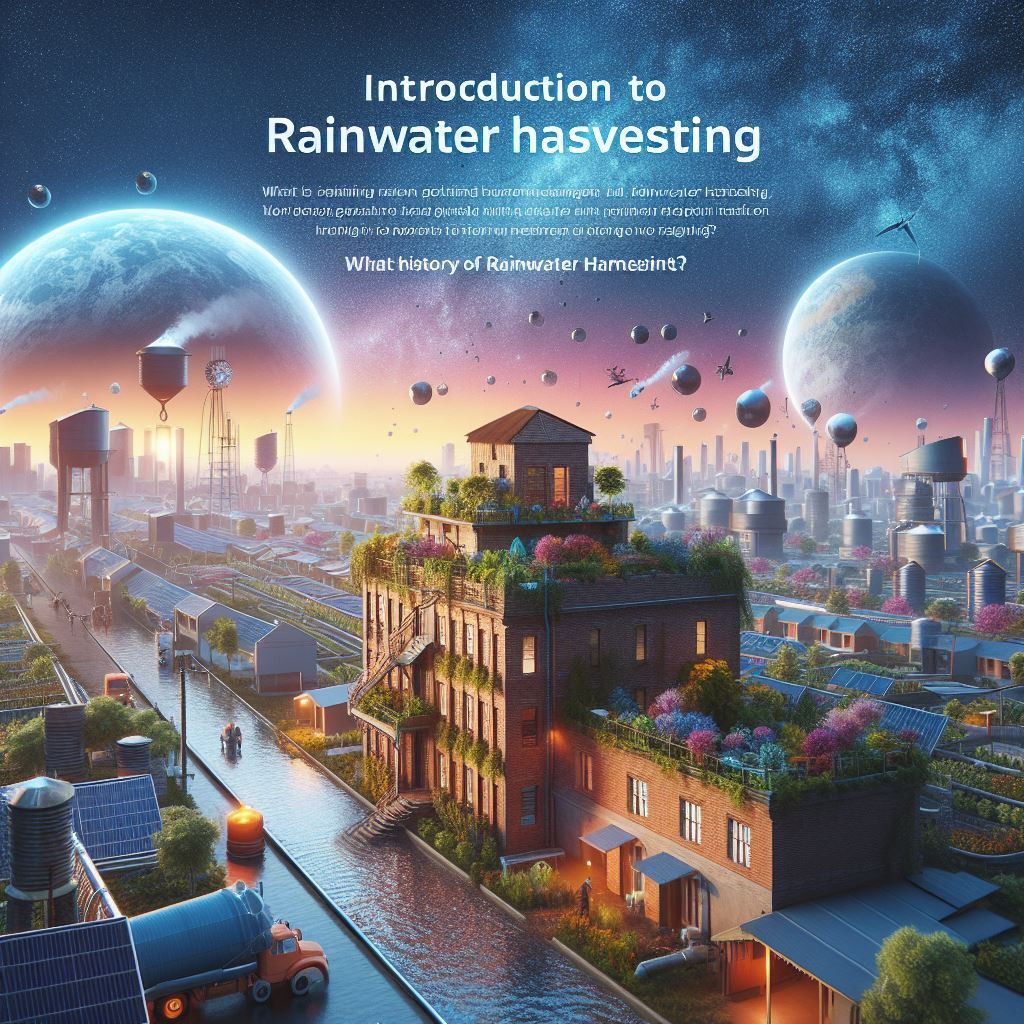Rainwater harvesting is a time-tested practice that involves the collection, storage, and utilization of rainwater for various purposes. It is a sustainable approach to water management that has gained significant attention in recent years due to its numerous environmental, economic, and social benefits.
1.1 What is Rainwater Harvesting?
Rainwater harvesting is the process of capturing rainwater that falls on rooftops, pavements, and other surfaces, and storing it for later use. This harvested rainwater can be used for a wide range of purposes, including irrigation, household activities, groundwater recharge, and even drinking water supply after proper treatment.
Instagram: - 👉 https://www.instagram.com/amoltechnicalguru?igsh=ZGoyeWU3d25sZWEw
Facebook Page: - Amol Content Writer
There are several techniques for rainwater harvesting, including:
- Rooftop Rainwater Harvesting: This involves collecting rainwater from rooftops using gutters and downpipes and storing it in tanks or reservoirs.
- Surface Runoff Harvesting: This method involves capturing rainwater from paved surfaces, such as roads and driveways, and directing it into storage facilities or infiltration basins.
- Stormwater Harvesting: This technique involves collecting rainwater runoff from urban areas and storing it for various uses, such as landscape irrigation or groundwater recharge.
1.2 Why is it Important?
Rainwater harvesting plays a crucial role in addressing water scarcity and promoting sustainable water management practices. Some key reasons why rainwater harvesting is important include:
- Conservation of Freshwater Resources: By capturing rainwater, we reduce our reliance on groundwater and surface water sources, thus conserving precious freshwater resources.
- Mitigation of Flooding: Rainwater harvesting helps to mitigate the impacts of urban flooding by reducing stormwater runoff and channeling it into storage facilities or infiltration systems.
- Drought Resilience: During periods of drought or water scarcity, rainwater harvesting provides a reliable alternative water source for irrigation, household use, and other essential needs.
- Cost Savings: Harvesting rainwater can lead to significant cost savings on water bills, especially in regions where water is scarce or expensive to access.
- Environmental Benefits: Rainwater harvesting helps to reduce soil erosion, replenish groundwater aquifers, and maintain healthy ecosystems by preserving natural water cycles.
1.3 Brief History of Rainwater Harvesting
The practice of rainwater harvesting dates back thousands of years and has been utilized by various civilizations around the world. Some notable examples of historical rainwater harvesting systems include:
- Ancient Rome: The Romans were pioneers in rainwater harvesting, constructing elaborate aqueducts and cisterns to capture and store rainwater for public baths, fountains, and household use.
- Ancient Mesopotamia: The inhabitants of Mesopotamia (modern-day Iraq) relied on rainwater harvesting techniques, such as rooftop catchment systems and underground cisterns, to supplement their water supply for agriculture and domestic purposes.
- Traditional Indigenous Practices: Indigenous communities in regions like Africa, Asia, and the Americas have long practiced rainwater harvesting through methods such as earthen dams, stone catchment basins, and terraced fields to capture rainwater for irrigation and drinking.
In recent decades, there has been a resurgence of interest in rainwater harvesting as a sustainable water management solution, driven by growing concerns over water scarcity, population growth, and climate change. Governments, organizations, and communities around the world are increasingly embracing rainwater harvesting as a vital component of water security and resilience in the face of evolving environmental challenges.
As we delve deeper into the principles, techniques, and applications of rainwater harvesting in the subsequent chapters, it becomes evident that this ancient practice holds immense potential for addressing contemporary water challenges and building a more sustainable future for generations to come.
Instagram: - 👉 https://www.instagram.com/amoltechnicalguru?igsh=ZGoyeWU3d25sZWEw
Facebook Page: - Amol Content Writer
- #RainwaterHarvesting
- #WaterConservation
- #SustainableWater
- #SaveWater
- #WaterManagement
- #ClimateResilience
- #DroughtMitigation
- #GreenInfrastructure
- #WaterSecurity
- #RainwaterCollection
- #EnvironmentalSustainability
- #CommunityDevelopment
- #UrbanWater
- #RooftopHarvesting
- #WaterScarcity
- #EcoFriendly
- #SmartWater
- #ResourceManagement
- #Hydrology
- #Sustainability
- #WaterReuse
- #NaturalResource
- #CleanWater
- #RainwaterStorage
- #ResilientCommunities
- #WatershedManagement
- #RenewableWater
- #WaterInfrastructure
- #WaterCycle
- #GlobalWater
📌✔Follow to More Information & Daily Trending Updates📌👇👇👇
Instagram: - 👉 https://www.instagram.com/amoltechnicalguru?igsh=ZGoyeWU3d25sZWEw
Facebook Page: - Amol Content Writer

